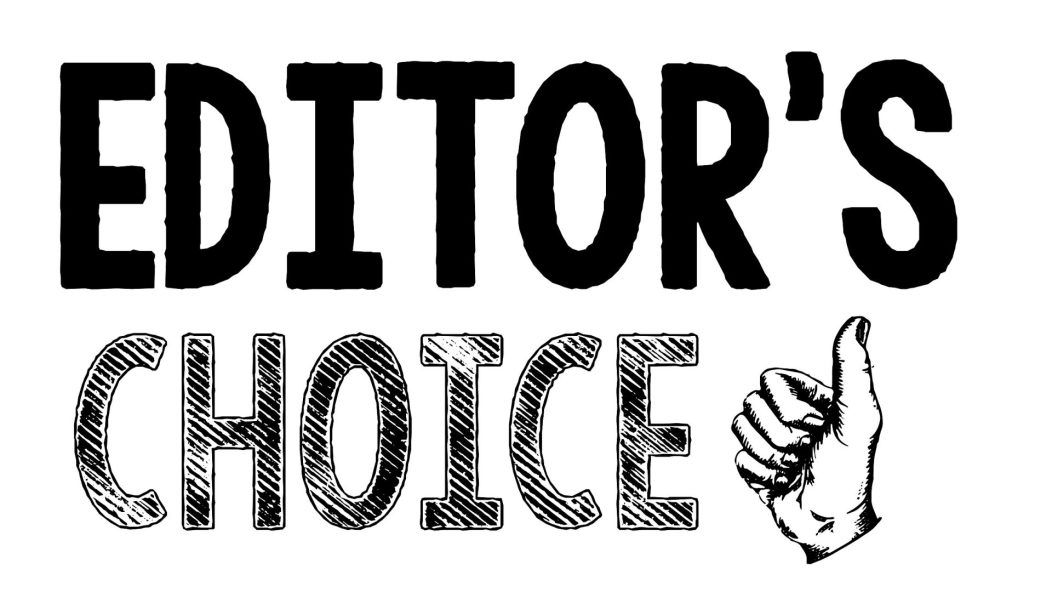
Editors' Choice: Stream Bloody Gore

…
I’ve been thinking about Sumerian records a lot lately. Not because of any of the music they are putting out now (although the fact that they are suddenly home to both Between the Buried and Me and Jonathan Davis is at least worth pondering) but because of the music that the label refused to make available seven years ago. Back in 2011, Sumerian, along with other metal labels like Century Media, Metal Blade, and Prosthetic Records, pulled their catalog from Spotify, which at the time was still fighting to gain ground in the American market due to the miniscule payouts that the streaming service was offering artists.
“We’re all about exposure, but only major labels have equity with Spotify,” Sumerian tweeted at the time. “All us metal labels will join forces and make our own [platform] so that our artists can eat.”
This proposed metal streaming service never materialized, and gradually each of the labels caved and returned their catalog to Spotify’s library. Even though Spotify’s payouts remain miniscule, independent labels have adopted a “if you can’t beat ’em, join ’em” mentality. By doing so, they acquiesced to the terms set by Spotify as well as the major labels. Even though this doesn’t benefit the indie labels in any direct financial sense, denying that Spotify and other streaming services represent a huge portion of modern music listening would be foolish. The independent metal labels had no power to stop Spotify from reshaping the music industry.
“Y’all asking about power, I got a lot of it,” Kendrick Lamar rapped on “Hood Politics.” Last month, he proved that statement by threatening to pull his music from Spotify if the service didn’t change its controversial “Hateful Content” policy following the removal of artists like R. Kelly and XXXtentacion from its promoted playlists and algorithmic recommendations. Shortly thereafter, Spotify relented and returned XXXtentacion’s “Sad!” to their immensely popular RapCaviar playlist.
These two incidents serve as a useful bookends for how Spotify has grown over the years, as well as how our relationship with the company has changed. In 2011, it was easy to see Spotify as a neutral party: a platform that would deliver us music at a low cost and would be marginally more ethical than pirating. Now in 2018, Spotify is more than just a delivery service; it is a promotional tool, a partner with major corporations, and an editorial voice that decides what music gets pushed to onto its front page. In a twist that would make Uncle Ben proud, that increased power has come with increased responsibility.
Looking back, it is remarkable how readily sites like Metal Insider and MetalSucks were willing to embrace Spotify. When the app launched in America, MetalSucks treated it like the second coming of Cliff Burton, describing it as “THE BEST THING EVVVAAAARRRRRR!” and declaring that “music consumption will never be the same.” On that second count, they were certainly right, but why were they encouraging readers to sign up for Spotify with such urgency? It is important to remember that in 2011 there was a much stronger culture of optimism surrounding the internet and the advancements of the tech sector. Social media was still fresh-faced and associated more with the political organizing of the Arab Spring than troll-infested teeth gnashing. In this context, it was much easier to see Spotify purely as a positive for consumers. Not only would Spotify grant its users access to an outrageous amount of music, they would do so legally. The miniscule payouts from Spotify were functionally the same as Starbucks donating part of your money spent on coffee to charitable causes. Streaming offered consumers what amounted to guilt-free piracy.
Although I described the mentality around tech in the early part of the decade as optimistic, the way that publications championed Spotify betrays a much deeper cynicism. A common refrain from MetalSucks in 2011 was the lack of pay for artists didn’t matter because artists generally don’t make a living from their work. While this may be true, why was this an acceptable status quo to lobby for? If we are asking for a new order to rise in music consumption, why not imagine one that benefits both the creator and the consumer?
I think part of the reason the media was so happy to embrace Spotify is rooted in a distrust of the label system. For an older generation, record labels were the music industry’s primary boogie men: dressed in suits and digging their grubby hands into artist’s pockets and master tapes. Implicit in the charge that labels need to get with the program and join Spotify is the assumption that Spotify would, in the parlance of Silicon Valley, disrupt the major label system. The most optimistic view is that this disruption would ultimately benefit artists looking to get their music in front of the biggest audience possible.
It didn’t quite work out that way.
The streaming revolution didn’t disrupt the major label system, it fortified it.
Not only does the payment structure of Spotify overwhelmingly favor major label artists, but they have also poured resources into using Spotify’s algorithms and playlist model to their advantage. As Liz Pelly extensively detailed in a piece for Watt, each of the three major labels have started smaller companies that curate playlists exclusively from the parent label’s catalog. When these songs perform well, they get boosted into more popular playlists, creating a algorithmic human centipede that launches songs with promotional muscle and wide appeal into the charts and leaves smaller and more challenging material in the dust. On top of that, major labels work directly with Spotify liaisons to pitch specific material for high performing playlists. The result is a system nearly identical to the old radio model, but with even less of the proceeds going to the artists that make it possible.
The playlist system is also the epicenter of Spotify’s moral quandaries. While Spotify’s recommendation services at least operate under the guise of data-driven objectivity, Spotify also pushes its users towards playlists that Spotify curates itself. By gaining the power to promote specific songs and artists, Spotify has inherited the responsibility of choosing which artists to promote. This means that they are now in the same muddy and complicated waters that music writers and publicists have been swimming in for years. Let me tell you from personal experience, sussing out which artists to promote, which ones to avoid, and how to navigate legacy acts with a history of questionable behavior is not fun, and this blog has nowhere near the reach or power that Spotify has. As a result, I can sympathize with the headaches that Spotify’s team are likely suffering from, but I also feel pretty confident in saying that their track record so far has been spotty at best.
Not only has their algorithmic system created charts dominated mostly by male artists, but their attempts to deal with controversial acts like XXXtentacion have been sloppy. First, they added his music to their curated playlists despite awareness of his horrific treatment of his ex-girlfriend, then they quietly stopped promoting his music after announcing their Hateful Content policy, then reversed that decision when Kendrick Lamar and others threatened to leave, and finally, after XXXtentacion was murdered, plastered their front page with a tribute to the rapper.
Parsing out exactly what Spotify should have done instead of that dizzying, Tony Hawk-esque spin is not easy. Should Spotify have promoted “X” in the first place? Probably not. Was it smart of them to make sure their policy didn’t actively boot artists off of their library? Yes. Was their policy otherwise incredibly vague and was Lamar right to protest it on the grounds that it could potentially be used to discriminate against artists of color? Yes and yes. Is it crass to capitalize on the violent death of a 20-year-old artist by making a tribute playlist to him, even if he was a total fucking scumbag? Fuck man, I don’t know.
These kinds of situations are only going to get messier the more Spotify consolidates its power in the industry, and the messier it gets, the harder it will be for consumers to justify using the service on any level other than convenience. Spotify is no longer a guilt-free option, if it ever was one in the first place.
Of course, my hands aren’t clean in this matter either. I was just as optimistic about the possibilities of tech as anyone back in the early 2010s, and I signed up for Spotify the minute it launched in America in part because of the pieces MetalSucks was writing at the time. Hell, on this very blog, I took a glass-half view to the service as recently as 2015 (by the way, I was kind of right about the next generation being genre-agnostic, I just didn’t expect them to express that agnosticism via Soundcloud rap). Even now, I still use Spotify, and Invisible Oranges uses the service as part of our rewards to our patrons. We’re just as complicit as MetalSucks was, then (it’s worth noting that they have also become much more evenhanded in their coverage of Spotify as well).
All of this has made me reconsider Sumerian’s plan for a streaming service run by metal labels. I wonder whether we should have been more supportive of an idea like this at the time, that maybe we should have picked the side of the people trying to get their artists paid instead of the tech bros who promised to change the industry forever.
Of course, if I’m going to criticize the metal media (and consumers such as myself) for not dreaming big enough in 2011, I should keep that same energy in 2018. A streaming service run by metal labels might be an improvement over one that works in tandem with the majors, but why stop there? Why not imagine and work towards a streaming service run by the artists that make the music that people are signing up to listen to? Something like Tidal, but run by working metal musicians instead of pop star millionaires. We have nothing to lose but our streams.
(Although I linked to Liz Pelly’s work earlier, I want to stress how influential her writing, as well as David Turner’s Penny Fractions newsletter, has been on my thinking on this subject. All credit where credit is due.)
…
Ian’s Picks
“Beauty In Falling Leaves”
YOB — Our Raw Heart
By the time you read this, I’ll be massaging my neck and suffering through ringing ears after seeing YOB live. I’ll have more to say about the particulars of that performance soon, but I want to highlight this track from their most recent album. It isn’t often that you can pinpoint the exact chord change that makes a song a future classic, but thankfully YOB play slow enough to make each harmonic shift instantly noticeable. “Beauty In Falling Leaves” begins with a desperate and yearning guitar pattern that steadily ascends until it falters back down to begin again. This cycle comes to a head in the chorus, where after confronting the constant presence of death singer Mike Scheidt is shepherded back to life by another person’s love. The music follows this sentiment perfectly. As Scheidt sings “your heart brings me home” the band steadily resolves towards a glorious major upswing. When they finally land, appropriately on the word “home,” the result is overwhelming, like the sun bursting out from behind the clouds. The rest of the song is YOB doing YOB, but this one moment is where the emotional foundation of the song is solidified.
“The Warm Glow”
Ancestors – Suspended In Reflections
Suspended In Reflections is the kind of album that makes me irrationally jealous as a songwriter. Ancestors have matched my sensibilities so precisely that I’m frustrated that I didn’t think of these songs first. My one comfort is that I wouldn’t have been able to nail the tone of dreamy melancholy and distortion-fueled euphoria the way that they do on “The Warm Glow.” The song is heavy in the way that a duvet made of lead would be. Sure, you can’t move once its on top of you, but it’s a pleasant place to be trapped under.
“For My Crimes”
Marissa Nadler – For My Crimes
The perfect soundtrack to a bright summer day that you can’t enjoy because you are haunted by instances of regret in your life and the pain you have caused others.
…
Jon’s Picks
I didn’t pick any new music. Sorry.
“They Do Not Come Knocking There Anymore”
Isengrind / TwinSisterMoon / Natural Snow Buildings — The Snowbringer Cult
“They Do Not Come Knocking There Anymore”: the epic sixteen-and-a-half minute closer for what could be considered Solange Gularte and Mehdi Ameziane’s manifesto, a three-part split and collaboration between their solo projects Isengrind and TwinSisterMoon, as well as a double-album from their prolific Natural Snow Buildings project. If not for their band’s name, The Snowbringer Cult would be a misnomer, with this final track’s warm haze and slow-burn feeling more like Summer’s heat than their snowy obsession. Across its length, Gularte and Ameziane delicately play with texture, speed, and abstract folk sounds, favoring humid atmosphere over structure and stability. I managed to find an original Students of Decay copy of this 2CD mammoth in a discount bin fairly recently, but the Ba Da Bing quadruple LP set has been an ownership goal for some time. Be sure to dig through The Snowbringer Cult as a whole, and, if it ends up lighting your fire, find a way to dive headfirst into the gorgeous Natural Snow Buildings, TwinSisterMoon, and Isengrind, but beware, their releases have been known to not come cheap. I wouldn’t mind seeing Ba Da Bing Records release more of their music over time.
“Are You Shivering”
Coil — Musick To Play In The Dark, Vol. 1
Ideally, the legendary Coil would need no introduction, but, so many years after Sleazy and John Balance’s own deaths, we find their seemingly endless, multiple-genre-defining discography relegated to “deep nerd” status once more. At least, mostly. For an extended period of time, Coil was a shining light in experimental and industrial music, essentially giving birth to new styles as they saw fit. Digging through their days-long discography is always a treat, and I end up dedicating a few weeks a year to just Coil. I first heard Musick To Play In The Dark, Vol. 1 almost fifteen years ago, and I have yet to hear anything darker. This is Moon Music, played by the light of the moon.
“The Portent”
Erraunt – The Portent
There is no other music which sounds like Erraunt.
…
Andrew’s Picks
I just got back from a weeklong Icelandic road trip. I had the chance to jam some of my favorite black metal on the asphalt spaghetti strewn throughout some of the most rapturous scenery on Earth. It was — and there’s just no other word for it — epic.
“A Rider in the Lands of an Infinite Dreamscape”
Spectral Lore — III
My all-time favorite black metal song by my all-time favorite black metal artist. Ayloss, the mastermind behind the project, relishes in the complete mastery of songwriting, drama, and narrative. These three things are absolutely key when it comes to black metal — specifically, the generation and maintenance of complex atmospherics. From its almighty ascension, orgasmic climax, and lighters-up riffing, “A Rider in the Lands of an Infinite Dreamscape” captures Spectral Lore’s penchant for extreme power and Homeric journeying. The best music for a journey is music which too takes you on one.
“Noumenon”
Mare Cognitum — Phobos Monolith
Black metal inspired by the cosmos makes complete sense (nothing is more atmospheric than infinity), and one-man project Mare Cognitum has been hoisting invisible oranges to the great beyond since 2011. There’s no shortage of drama on Phobos Monolith, with each moment completely milked for all it can possibly give — the balladic and well-paced “Noumenon” serves as a perfect example of Mare Cognitum’s faultless efficiency in this regard. On the road, kilometers melt away into nothingness as this song builds to its unbelievable peak; goosebumps spread, and the scenery before you feels even grander and more magnificent than it already is.
“Ce que le corps doit au sol”
Basalte — Vertige
My favorite black metal album of this year is, without competition, Vertige. Similar to Spectral Lore and Mare Cognitum, Basalte weave varying emotions and intensities into a complex, narrative-like latticework. Ever-shifting but always cohesive, “Ce que le corps doit au sol” rises and falls along a traceable but ultimately unknowable path. Its tail-end pairs with the following track in an especially aplomb transition; getting there feels like eternity but in retrospect feels momentaneous. And such was the nature of my trip: in that moment, time satisfyingly dissolved into the ether.
The memories, though, remain permanently gridlocked by the terrible throes of temporality.
…
Become an Invisible Oranges patron.
…










